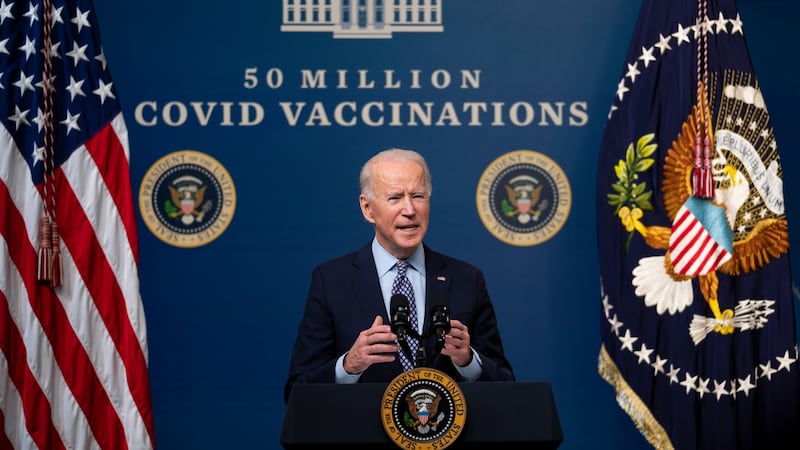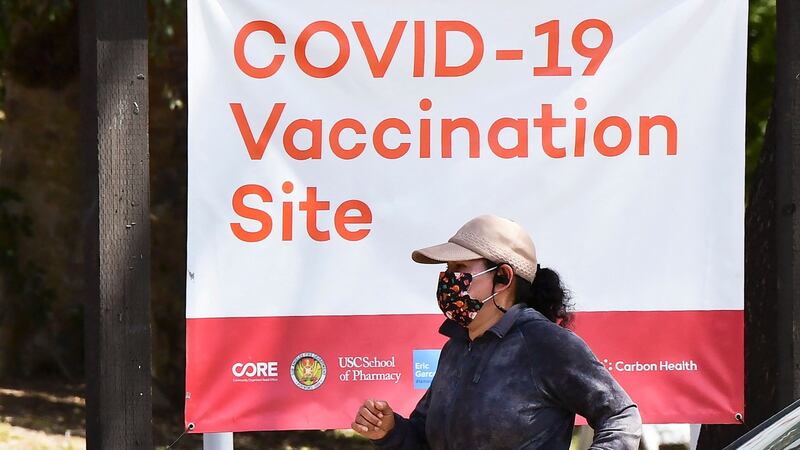Even as the US powered towards its goal of vaccinating more than 70 per cent of Americans against Covid-19 by early July, the country’s medical professionals and clinicians were still struggling with burnout, personal targeting and bureaucratic workloads – the effects of which could damage the country’s health system for years to come.
All this is not helped by a steep decline in vaccination rates. With almost 35 million cases, more than 605,000 deaths and the virus continuing to spread, US president Joe Biden said his administration would send people door to door, set up clinics at workplaces and urge employers to offer paid time off as part of a renewed push to reach tens of millions of unvaccinated Americans.

But health experts warned it was simply not enough, and recommended the president should take the potentially unpopular step of encouraging states, employers and colleges and universities to require vaccinations to slow the continuing spread of the virus.
When Dr Amy Acton became the face of Ohio's response to the pandemic as the crisis worsened in March 2020, she was lauded nationally for her professional insights and empathetic approach with the public. As the director of Ohio's department of health, she appeared on television every afternoon, calling on citizens to follow government advice and stay at home.
But all the while, many residents of the midwestern state were outraged by the restrictions and closures she recommended. Within weeks, protesters were turning up at her home in the state capital, Columbus.
By early summer Acton, a physician, was assigned her own security detail, so serious were the threats being made against her. All the while, Republican representatives in Ohio were seeking out ways to undermine her (even as she worked hand-in-hand with Republican governor Mike DeWine) – proposing legislation that would restrict her ability to offer medical advice, and potentially see her forced to give up doctor-patient confidentiality.
By June, such was the toxicity directed at herself, her religion and her family that she resigned. The state of Ohio had lost a key expert in its battle against the virus. On top of the vitriol Acton and many medical professionals have faced as a result of calling for restrictions on movement, is the enormous workload forced upon medical staff over the past 15 months.
Top scientists at the Centers for Disease Control and Prevention (CDC), the country’s public health agency, are moving towards early retirement such has been the level of burnout they are experiencing. Reports abound of intensive care (ICU) physicians who, having been faced with losing dozens of patients in short periods of time, have been asked to work 48-hour shifts.
“This question of burnout, personal and professional, is the No 1 thing I talk about with friends,” a senior, unnamed CDC epidemiologist who has “worked at a high level in the pandemic response” told Science Magazine.
The emotional and psychological needs of the workforce have not been adequately addressed, in part because you can't measure it
Dr Carol Bernstein, past-president of the American Psychiatric Association and professor of medicine at Montefiore Medical Center in New York City, has seen up close the toll 15 months of crisis mitigation and mounting deaths has exacted on the mental health of medical staff. Based in the Bronx, she has found herself at the "tip of the spear" of the Covid-19 emergency in America, she says. "It was just an avalanche," she says. "The fear of ourselves getting sick and infecting our families. It created a terrible crisis."
One of the major pre-pandemic issues facing clinicians, she says, was the huge amount of time they were asked to spend on paperwork, regulations and guidelines, rather than focusing on being with and treating patients. Over the course of the pandemic, it’s been medical staff working in critical care that are most at risk of burnout, according to the Medscape National Physician Burnout & Suicide Report 2021.
Tellingly, 58 per cent of the more than 12,000 people surveyed for that report said excessive bureaucratic responsibilities contributed most to their feeling of burnout. “It was increasingly driving nurses and physicians away from medicine because the meaning of the value and the purpose of their work was really being cut out from under them,” Dr Bernstein adds.
A Yale School of Public Health survey published in February found that during the pandemic, nearly one quarter of all healthcare workers have shown signs of probable post-traumatic stress disorder, and almost one half have had probable alcohol use disorder. Many respondents suggested that their "most upsetting experience was being isolated from their friends and families", it found.
Dr Bernstein says women doctors have left the workforce in droves over the past year due to the dual demands of teaching children from home while balancing professional responsibilities. “It’s a big problem in our country because we don’t have adequate childcare,” she says.
It’s not just the increased workload, public resistance or an avalanche of media work medical professionals are faced with. Scientists are also finding themselves inundated with requests to take part in or review virus-related academic papers. All of this, of course, is unfolding while many are having to work from home.
Uneven rollout
Though the CDC decides what vaccines are suitable for individual age groups, with the Pfizer-BioNTech vaccine now approved for children aged 12 and up (the Moderna and Janssen/J&J vaccines are approved for people aged 18 and up), individual states are responsible for organising their own rollouts, which has proved a challenge in itself.
As of June 1st, for instance, vast swathes of regions such as southern Missouri were at less than 20 per cent of adults fully vaccinated, versus about 40 per cent nationally, meaning that while the US is far ahead of much of the rest of the world in its rollout, it is uneven and likely to remain that way.

Other states have sought to adopt populist moves to get jabs into people’s arms. Ohio gave out $1 million each week for five weeks in May and June in an attempt to encourage people to get vaccinated, a stunt that briefly boosted uptake by more than 40 per cent before figures dropped off again.
These efforts are motivated by a concern that there’s a large chunk of the US population with little or no intention of getting vaccinated, meaning the threat posed by new variants remains. The long-term goal of reaching the perceived herd immunity level, thought to be achievable by vaccinating 80 per cent of the population, is likely to remain out of reach.
However, handing over responsibility for rollouts to individual states has, in some cases, been prescient. Some local authorities have set up 24-hour hotlines to take enquiries on vaccines, as well as cold calling and posting vaccination details to all residents aged 65 and over.
In West Virginia, one of the poorest states in the country that simultaneously struggles with higher-than-average health concerns, authorities established early on that using major national pharmacies to deliver vaccines for nursing home residents – as many states have been doing – wouldn't work, since more than half of West Virginia's pharmacies are independently owned. In Nevada, college students studying public health were deployed by a non-profit to answer calls from the public as queries around vaccinations surged earlier this year. In California, contact tracers have more recently been retrained as "vaccine navigators".
For medical professionals, the good news is that the pandemic is forcing essential, big picture discussions around change.
“The key issue is can we keep our institutions focused on the wellbeing of the workforce, even as things, quote unquote, go back to normal,” Dr Bernstein says. “The emotional and psychological needs of the workforce have not been adequately addressed, in part because you can’t measure it.”
She believes whatever change that’s coming for the medical field will transpire on local and institutional levels first.
“No one is advocating that we not be challenged by our work and that we not work hard, but we need to be supported too,” she says. “If not, the younger generation are going to say they don’t want to do this anymore.”











